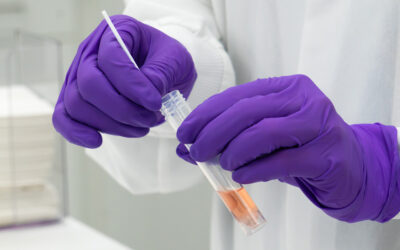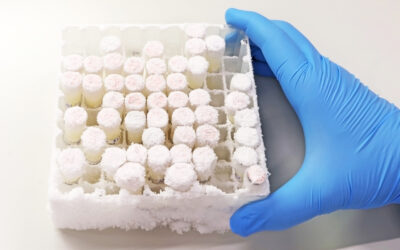This blog post is the second in our Optimal QC in the Clinical Laboratory series.
In a previous blog post, we highlighted the importance of external quality control products for QC in the clinical laboratory, rather than relying solely on internal controls built into the assays themselves. External QC forms the foundation of an optimal clinical quality control program. There are many different forms of external controls and not all external controls are created equally, so laboratories must understand and choose the highest quality materials in this category. As we will illustrate, third-party or independent quality control materials are the most unbiased and ideal form of external control materials as these materials are produced by an independent, third-party manufacturer and not produced by an assay manufacturer. This blog post will examine reasons why third-party controls are critical for proper QC.
How Assay-Manufacturer Controls Amplify Bias
On the surface, controls supplied by assay manufacturer may seem like a convenient QC solution since the clinical laboratory does not need to source control products from a separate supplier. However, assay manufacturer-made controls can magnify, rather than minimize, bias. Because assay manufacturer-supplied controls often feature the same reagents and other materials as the corresponding assays, they may fail to adequately challenge the assays. A manufacturing flaw may compromise both the assay and the control, preventing the control from performing its basic function of challenging the assay’s performance.
Additionally, some clinical laboratory professionals assume that an assay manufacturer-supplied control will be the most compatible and therefore the most comprehensive challenge to the assay since it was engineered and produced by the same company. Yet this assumption directly contradicts the basic principles of QC. The benchmark of a quality control product is not its compatibility with an assay, in terms of similar componentry, but, rather, its ability to challenge the assay. Quality control is built on the principle that proximity can produce bias and error. Quality control, by principle, should add layers of removal from the assay to ensure the utmost degrees of objectivity. Proficiency testing forms the outermost layer of quality control, bringing in outside auditors to assess a laboratory’s analytical processes. For routine QC, external, third-party controls provide the degree of removal necessary to objectively monitor analytical performance.
Case Study: Recurrent Errors from Assay Manufacturer-Made Controls
We will review a 2014 case study from the Lombardy region of Italy to demonstrate the limitations and risk of bias associated with assay manufacturer-made controls.1 In this case study, a recall occurred because assay manufacturer-made controls did not reveal a performance shift in an intact parathyroid hormone assay. The performance shift potentially caused falsely elevated patient results. The magnitude of the shift was averaged as 13% to 45%. Had laboratories relied upon only the assay manufacturer-made controls, the assay performance failure likely would have remained undetected since the controls were made of the same reagents and materials as the assays themselves.
These undetected shifts could have resulted in 40,000 inaccurate patient results within 19 laboratories. Since the case study focused on a single region, the total global impact could have been much greater. The authors of the case study concluded that the use of third-party quality control materials could have detected the shift in the assay and thus prevented inaccurate reporting of patient results. Since approximately 70% of healthcare decisions rely on the results of clinical laboratory testing, this type of bias can quickly compound into immeasurable impacts on the lives of patients.2
Minimizing Bias with Third-Party QC
Laboratories around the world follow ISO 15189, which recommends the “Use of independent third-party control materials should be considered, either instead of, or in addition to, any control materials supplied by the reagent or instrument manufacturer.” In addition to ISO, several global standards organizations recommend third-party (independent) quality control materials, including United Kingdom National Health Services (NHS), Quality Council of India (QCI), National Association of Testing Authorities (NATA), Clinical and Laboratory Standards Institute (CLSI), Centers for Medicare and Medicaid Services (CMS), and Standards Malaysia. Many assay manufacturers also recommend clinical laboratories use third-party (independent) quality control materials in their product inserts and other technical resources.
In summary, quality control in the clinical laboratory must subject all instrumentation, assays, materials, and methods to external challenges that are removed, as much as possible, from the biases inherent to each analytical process. As discussed in the first post of this series, external controls (instead of built-in controls) provide the first layer of this objective removal. Third-party QC provides an additional level of externality.
In the third post of this series, we will examine the critical importance of IVD (In Vitro Diagnostic Use) labelled QC products, rather than the use of RUO (Research Use Only) materials for quality control.
Third-Party Controls from Microbiologics
The Microbiologics portfolio of molecular QC brings third-party objectivity to a broad range of instruments and assays. We offer molecular controls for the major syndromic groups of infectious disease, including respiratory, GI, Women’s Health & STI, HAI, and more.
Sources
1. Lima-Oliveira G, Lippi G, Salvagno GL, Brocco G, Guidi GC. In vitro diagnostic company recalls and medical laboratory practices: an Italian case. Biochem Med (Zagreb). 2015 Jun 5;25(2):273-8. doi: 10.11613/BM.2015.028. PMID: 26110040; PMCID: PMC4470101.
2. Sarata, A.K., & Johnson, J, A. (2014). Regulation of Clinical Tests: In Vitro Diagnostic (IVD) Devices, Laboratory Developed Tests (LDTs), and Genetic Tests [White Paper]. Congressional Research Service. https://sgp.fas.org/crs/misc/R43438.pdf






0 Comments